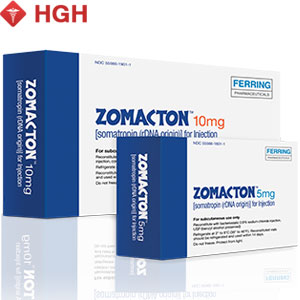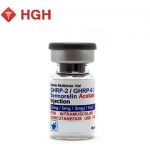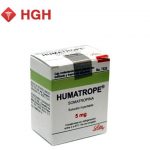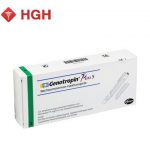Introduction
The consequent change of testosterone levels in men was researched by the Austrian Society of Urology in 1994. The workshop was asked to name the “partial androgen deficiency in aging men” syndrome of PADAM. In domestic medicine, many are inclined to the term “androgen deficiency” or “age hypogonadism.” Androgen deficiency with age is a condition caused by age-related decreases in testosterone secretion by the Leydig cells.
 Recently there has been great interest in the problem associated with the prevalence of hypogonadism. It is recognized that as men age, there is a gradual decrease in the level of sex hormones, the beginning of this falls between ages 30 and 40. It is well known that by 40 to 50 years of age, approximately 7% of men are suffering from hypogonadism. At 60-80 years old – 20%.
Recently there has been great interest in the problem associated with the prevalence of hypogonadism. It is recognized that as men age, there is a gradual decrease in the level of sex hormones, the beginning of this falls between ages 30 and 40. It is well known that by 40 to 50 years of age, approximately 7% of men are suffering from hypogonadism. At 60-80 years old – 20%.
Those over 80 years old – 35%. According to numerous studies conducted in the U.S., androgen deficiency is noted amongst almost 5 million men. In addition to this, it is proven that there is a reduced of absent sexual function that not only affects the quality of life for these men, but can even lessen life’s duration.
It is known that the primary sex hormone, which is responsible for the health and activity of men throughout life, is testosterone. Together with dihydrotestosterone, androstenedione and their metabolites, it generates health of the central nervous system, maintaining functionality of the gonads and providing copulative functions. Testosterone, along with its androgenic effects, exerts potent anabolic effects on various human tissues.
It is in reality that the “Man and Medicine” of the National Congress (2006, Moscow) had said, “Changes in the level of testosterone influences androgenic regulation as a whole, not only causing a decrease in creativity, but changing emotional and sexual activity, as well as adversely affecting mineral and carbohydrate metabolism. So androgen deficiency is a problem that unites many medical specialists.” This was said by a member of RAMS, O.B. Loran.
One of the most pressing problems of today’s day and age is that androgen deficiency is often combined with a variety of diseases, primarily type II diabetes. Diabetes mellitus is one of the most common forms of disease and has a strong tendency to sustain growth. Annually, the number of its patients goes up by 6-7% in total. To this day is has been affecting 2-4% of the population. According to official statistics, more than 2 million people each year suffer from diabetes in our country and there are up to 200 million new cases. Approximately 88% of cases is related to type 2 diabetes.
A prevalence of androgen deficiency in these patients is 65%. Therefore, almost every second patient suffering from sexual dysfunction has type 2 diabetes. The most accurate data on the prevalence of sexual dysfunction in the general population and among patients with diabetes was found by the studies of the Massachusetts male aging studies (1994) and the work of Vinik and Richardson. The first study showed a clear relationship between the levels of free testosterone binding globulin sex steroids (SHBG) and the risk of insulin resistance and consequentially type II diabetes.
By reducing the level of free testosterone by just one standard deviation (3.9 ng/dL), the risk of developing type II diabetes is 1.58. But, while reducing SHBG by 1 standard deviation (15.8 nmol/L), the risk is 1.89. According to a second study, testosterone levels in patients with type II diabetes are 10-15% lower than levels of men without diabetes of the same age.
 In addition to this, androgen deficiency in men is closely correlated with presence of insulin resistance and hyperinsulinemia and introduction of testosterone. Interestingly, according to Enz RAMS, testosterone levels in patients with type 2 diabetes who are taking insulin remains in the normal range, in contrast to patients receiving oral hypoglycemic agents. (Kalinchenko SY, Kozlov GI, 2003.)
In addition to this, androgen deficiency in men is closely correlated with presence of insulin resistance and hyperinsulinemia and introduction of testosterone. Interestingly, according to Enz RAMS, testosterone levels in patients with type 2 diabetes who are taking insulin remains in the normal range, in contrast to patients receiving oral hypoglycemic agents. (Kalinchenko SY, Kozlov GI, 2003.)
Therefore we cannot conclude the effect of insulin on testosterone production in the Leydig cells. Also, cis it proven that particularly obese patients with type II diabetes and low levels of free testosterone are not associated with the degree of decompensated diabetes.
It is said that the primary cause of development of hypogonadism is a decrease in the number of Leydig cells themselves. This is due to the deterioration of testicular tissue and reduced number of surface receptors used by the hormone. The second possible cause of androgen deficiency in obese patients with type II diabetes is the abdominal type of obesity that is usually associated with the disease.
Currently, there is a lot of data that confirms the relationship between visceral obesity and a decrease in testosterone levels in men. Adipose tissue has a natural “affinity” to steroid hormones. It is elevated in amounts that convert androgens (androstenedione and testosterone) to estrogens, which suppresses secretion as gonadotropin-releasing hormones and luteinizing hormones.
This leads to lower blood testosterone levels. In addition to this, the cause of androgen deficiency in obese patients is sometimes explained by while adipose tissue leptin, which stimulated the secretion of gonadotropin-releasing hormones. It is believed that some of the central resistors of leptin in obese patients cause the disruption of gonadotropin secretion, which may be another reason for the development of hypogonadtropic hypogonadism.
Clinical Manifestations and Diagnosis
Most of the clinical manifestations of testosterone deficiency are nonspecific. Often times the only symptom of androgen deficiency may be a reduction or loss of sexual desire (libido). Also, there may be some sexual symptoms (worsening quality and frequency of erections, difficulty reaching orgasm, decreased intensity of orgasm, and decreased sensitivity of the penis).
There may also be emotional symptoms such as decrease in intellectual activity and creative productivity, increased fatigue, depression and insomnia. Other observations can be changes in bone health, muscles, skin and fat (reduced strength and volume of muscle, lessened body hair, wrinkles, decreased bone density, and increased visceral fat). Besides this a man with deficiency will be feeling the “tides,” fluctuations in blood pressure during the day accompanied by dizziness, sweating, and cardiac fluctuations.
Additional clinical studies in practice take action to determine the total level of testosterone in the body. When the concentration of this hormone is less than 12 nmol/L, seeing as how normal levels of the body vary from 13-33 nmol/L, this indicates the presence of androgen deficiency. However, it should be noted that the more informative way to define the level of free testosterone is biologically. Unfortunately, this laboratory study is very difficult to hold.
In this regard, it is determined by calculation of total testosterone levels along with binding globulin sex hormone levels along with weighing the clinical symptoms. In addition to specific inspection, it is also advisable to perform a complete blood count seeing as how a decrease in testosterone levels may cause anemia. It is also recommended to go through a densitometry seeing as how androgen deficiency is a major cause of osteoporosis in men.
Substitution Therapy with Testosterone
Throughout treatment of hypogonadism the main role of therapy is the normalization of testosterone in the blood plasma. This treatment aims to improve sexual function along with the general well-being of men. Long-term treatment (lasting more than one year,) show many positive effects – significant increase in bone density, muscle mass and strength, decrease in volume of subcutaneous and visceral fat, reduced levels of atherogenic lipids, boost of insulin sensitivity, and so on. Currently, the pharmaceutical market has a wide range of products for hormone replacement therapy, particularly testosterone. Each differs from one another with duration of action and potential side effects.
Testosterone gels are the most advanced out of the preparations meant for transdermal use. These are applied to clean and dry skin on shoulders, arms or anterior of the abdominal wall. A thin layer should be applied and allowed to dry completely for at least 3-5 minutes before dressing. After 2-3 days since the start of treatment the gel will saturate the skin and absorption of testosterone occurs through the skin into the body’s circulation. A factor that shouldn’t be overlooked is the maintenance of the circadian rhythm in the male body.
Conclusion
The problem of androgen deficiency in men with type II diabetes is undoubtedly major. Diagnosis and treatment of hypogonadism that comes with age can not only prevent the development of serious diseases such as type II diabetes, but also help to achieve a good balance of carbohydrates and lipid metabolism. The use of testosterone preparations in combination with anti-diabetic therapy leads to a great improvement of metabolic control of diabetes mellitus. This results in a lower level of glycated hemoglobin, more sensitivity to insulin, and weight reduction due to a lessened amount of visceral adipose tissue. In conclusion, using hormone replacement therapy can actually provide you with a decent quality of life in the modern world.




